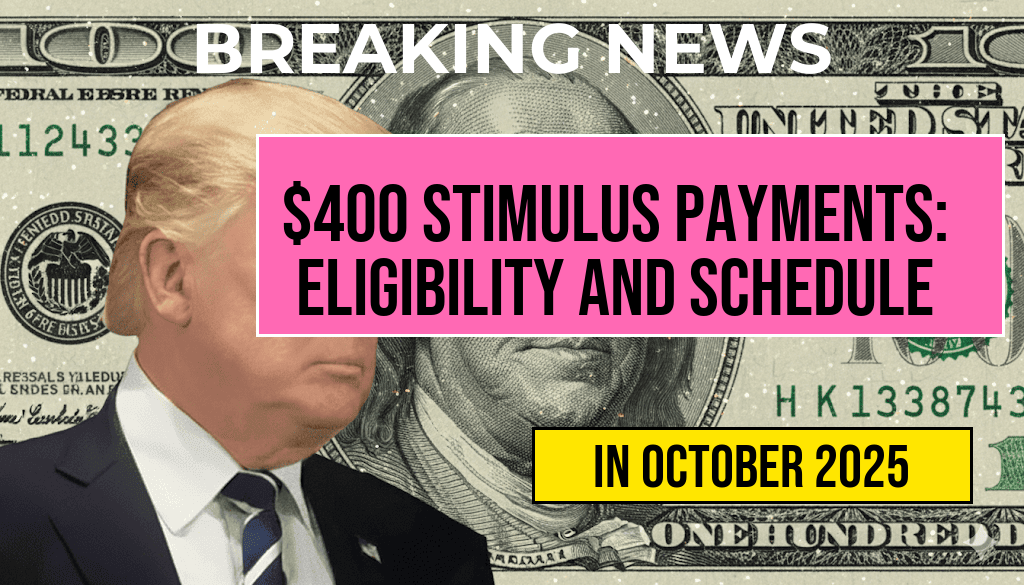As economic recovery efforts continue, various states across the U.S. are rolling out $400 stimulus payments aimed at providing financial relief to residents. These payments, part of broader initiatives to combat inflation and support low- to middle-income households, are designed to ease the burden of rising costs in everyday life. Understanding the eligibility criteria and the payment schedule is crucial for recipients looking to benefit from this initiative. Here’s a comprehensive overview of what you need to know about these stimulus payments, including who qualifies and when payments will be disbursed.
Eligibility Criteria for $400 Stimulus Payments
To qualify for the $400 stimulus payments, residents must meet specific criteria set by their state governments. While the exact requirements may vary, the following general guidelines apply:
- Income Level: Most states target low- to middle-income households, typically defined as those earning less than a certain amount annually. This threshold often aligns with federal poverty guidelines.
- Residency: Applicants must be residents of the state offering the stimulus payments. Proof of residency, such as a state-issued ID or utility bill, may be required.
- Filing Status: Individuals who filed their taxes as single, married, or head of household may need to demonstrate their filing status to determine eligibility.
- Age Restrictions: Some states impose age restrictions, requiring recipients to be at least 18 years old or part of a dependent household.
Payment Schedule
The payment schedule for the $400 stimulus payments varies by state, with many jurisdictions planning to distribute funds in a staggered manner. Below is a general timeline for expected disbursements:
| State | Expected Payment Date | Distribution Method |
|---|---|---|
| California | Beginning of November 2023 | Direct deposit and mailed checks |
| Florida | Mid-December 2023 | Direct deposit only |
| New York | Late October 2023 | Mailed checks |
| Texas | January 2024 | Direct deposit and prepaid cards |
How to Apply
Applying for the $400 stimulus payments typically involves a straightforward process. Most states provide an online application portal where residents can submit their information. Here’s a step-by-step guide:
- Visit your state’s official government website.
- Navigate to the section dedicated to economic relief or stimulus payments.
- Complete the online application form, ensuring all information is accurate.
- Submit any required documentation, such as proof of income and residency.
- Check the application status via the same portal or by contacting the state’s office.
Additional Resources
For more detailed information about the $400 stimulus payments and to stay updated on any changes, residents can refer to the following resources:
As states continue to navigate economic challenges, the $400 stimulus payments serve as a crucial lifeline for many Americans. By understanding eligibility and the application process, residents can better prepare to receive this financial assistance.
Frequently Asked Questions
What are the eligibility criteria for the $400 stimulus payments?
To qualify for the $400 stimulus payments, applicants must meet specific income thresholds, residency requirements, and other guidelines as outlined by the government. Generally, individuals must demonstrate financial need and have been affected by recent economic challenges.
When can I expect to receive my $400 stimulus payment?
The payment schedule for the $400 stimulus payments varies depending on the state and the processing time of applications. Generally, eligible recipients can expect to receive their payments within a few weeks to a couple of months after their application is approved.
How will the $400 stimulus payments be distributed?
The $400 stimulus payments will likely be distributed through various methods including direct deposits, checks mailed to recipients, or electronic payment systems. The method of distribution will depend on the individual’s preference and the information provided during the application process.
Can I apply for the $400 stimulus payment if I have already received previous stimulus payments?
Yes, individuals are still eligible to apply for the $400 stimulus payment even if they have received previous stimulus payments. However, they must still meet the current eligibility criteria to qualify for this specific payment.
What should I do if I haven’t received my $400 stimulus payment?
If you have not received your $400 stimulus payment and believe you are eligible, it is recommended to check the status of your application through the appropriate government portal. If there are any issues, you may need to contact customer support for further assistance.

Leave a Reply